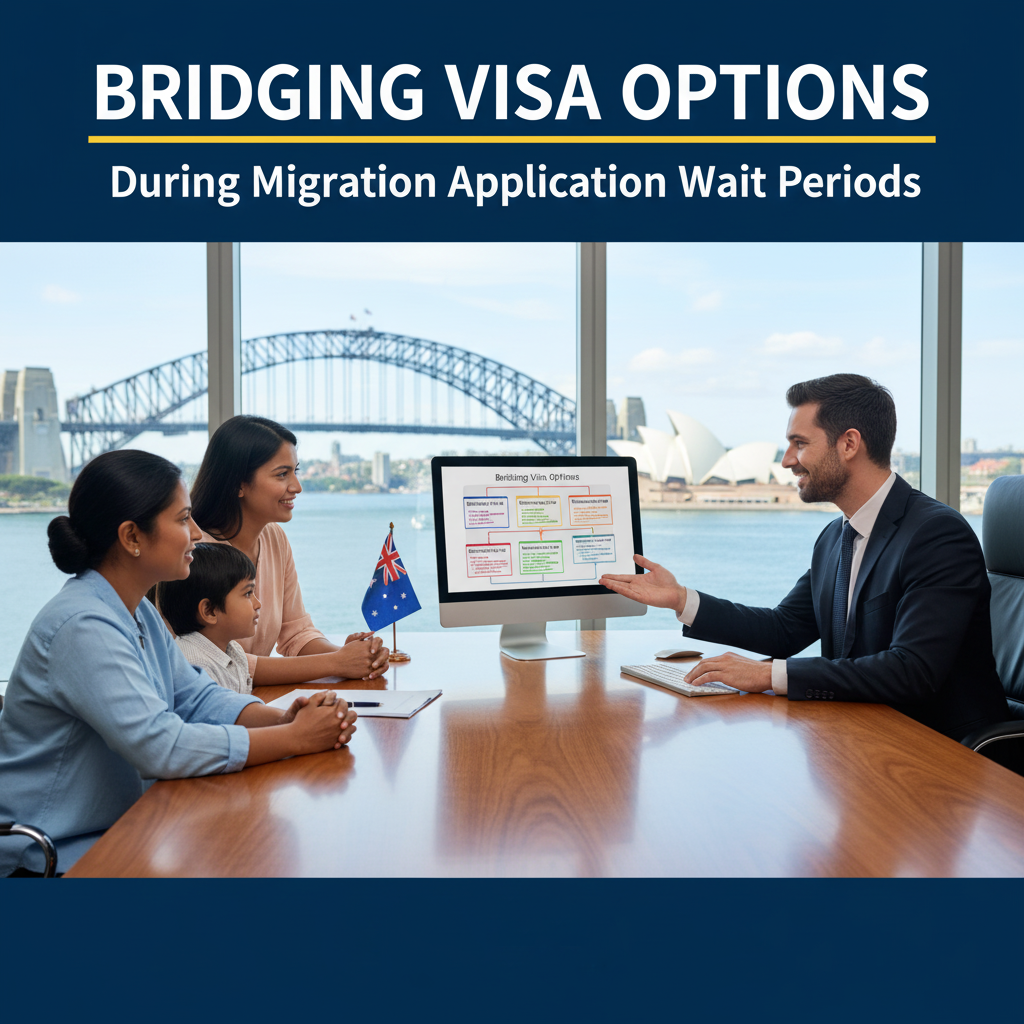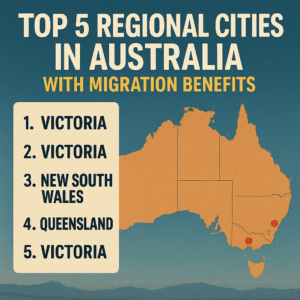Discover bridging visa types, eligibility, and application steps in Australia. Navigate your migration application waiting period with clarity and confidence.
Step-by-Step Guide to Bridging Visa Options During Migration Application Wait Periods
Navigating the migration application waiting period in Australia can be challenging. Bridging visa options are designed to help you remain lawfully in the country while your substantive visa application is processed. This guide explains bridging visa types, eligibility, application steps, and key considerations to help you make informed decisions during your visa waiting period in Australia.
Step 1: Understand Bridging Visa Types
Australia offers several bridging visa types, each tailored to specific migration scenarios. Knowing the differences is essential for choosing the right option for your situation.
| Bridging Visa Type | Purpose | Key Features | Travel Rights | Work Rights |
|---|---|---|---|---|
| Bridging Visa A (BVA) | For those who apply for a new substantive visa while holding a current substantive visa | Usually granted automatically; allows lawful stay during processing | No travel rights | May have work rights, restrictions apply |
| Bridging Visa B (BVB) | For applicants needing to travel overseas and return while awaiting a visa decision | Must apply separately; allows travel and re-entry | Permits travel and re-entry | Similar to BVA |
| Bridging Visa C (BVC) | For those who apply for a substantive visa but do not hold a valid visa | Must be applied for; provides lawful stay | No travel rights | May have work rights, restrictions apply |
| Bridging Visa D (BVD) | For people unable to apply for a substantive visa immediately | Short-term solution; gives time to prepare or lodge a new application | No travel rights | No work rights |
| Bridging Visa E (BVE) | For people who are unlawful or whose visa has expired | Allows lawful stay while resolving immigration status or preparing to depart | No travel rights | Limited work rights, restrictions apply |
Each bridging visa Australia offers comes with specific eligibility requirements and conditions. It’s crucial to review these carefully or seek advice from a migration professional.
Step 2: Assess Your Eligibility
Before applying, confirm your eligibility for the relevant bridging visa type:
- Current Visa Status: Your present visa situation determines which bridging visa you can apply for.
- Application Status: You must have a pending substantive visa application, be awaiting an immigration decision, or be resolving your status.
- Compliance: Past breaches of visa conditions may affect your eligibility.
If you are unsure about your eligibility, consult the Department of Home Affairs or a registered migration agent.
Step 3: Prepare and Submit Your Application
Applying for a bridging visa is a structured process. Here’s how to proceed:
- Gather Documentation: Collect all necessary documents, including your current visa details, passport, and evidence of your pending migration application.
- Complete the Application: Most bridging visa applications are submitted online through the ImmiAccount portal. Ensure all information is accurate and complete.
- Pay Fees (if applicable): Some bridging visa types may require a fee. Check the latest fee schedule before applying.
- Submit and Track: After submission, monitor your application status via the portal. Respond promptly to any requests for additional information.
Processing times for bridging visas are generally faster than for substantive visas, but can vary depending on the visa type and your individual circumstances.
Step 4: Manage the Migration Application Waiting Period
The migration application waiting period can be lengthy, sometimes extending to months or even years, depending on the visa subclass and application volume. During this period:
- Stay Informed: Regularly check for updates on your application status.
- Comply with Conditions: Adhere to all bridging visa conditions, including work and travel restrictions.
- Seek Support: If you experience financial hardship or changes in circumstances, you may be eligible for exemptions or additional support.
Step 5: Understand Your Rights and Obligations
While on a bridging visa, you must comply with all attached conditions:
- Work Rights: Not all bridging visas allow work. Check your visa grant notice or consult the Department of Home Affairs.
- Travel Restrictions: Only Bridging Visa B allows travel outside Australia and re-entry. Exiting Australia on other bridging visas may result in cancellation.
- Reporting Requirements: Keep your contact details updated and respond to any government correspondence.
Breaching visa conditions can jeopardize your migration application and future eligibility.
Bridging visa
Bridging visa options are essential for managing the migration application waiting period in Australia. By understanding the different bridging visa types, assessing your eligibility, and following the correct application process, you can maintain your lawful status and reduce stress during your migration journey. Always refer to official resources or seek professional advice to ensure you make the best decisions for your circumstances.


